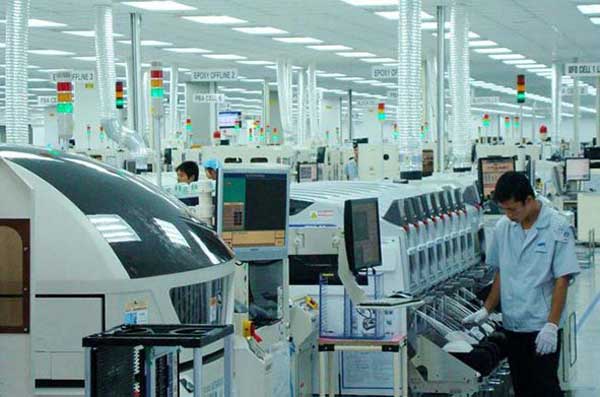|
Vietnam preferred as destination for manufacturers, survey
Standard Chartered Bank has
said Vietnam is emerging
as the most preferred destination for companies planning to move production
out of China.
|
|
|
An employee is at work at an
electronics complex in northern Vietnam. Lower wages, a young
and educated workforce and geographical proximity to China make Vietnam an attractive
destination
|
The bank’s global research team said
in a report released last week that China is shifting away from a
growth model based on low manufacturing wages and is increasing automation as
it moves up the value chain. This is opening up opportunities for low-cost
manufacturing regions like ASEAN.
Vietnam
is poised to be among the biggest beneficiaries of China’s move up the manufacturing
value chain, cited by more than one-third of respondents of its latest
survey.
Lower wages, a young and educated
workforce and geographical proximity to China
make Vietnam
an attractive destination, particularly for more labor-intensive
manufacturing segments. In addition, Vietnam is regarded as an
attractive consumer market thanks to its fast-growing middle class and
increasingly affluent population.
Respondents of the survey prefer to
move to regions closer to their existing operations. Vietnam’s geographical proximity to China would allow them to continue to use
their existing supply-chain network, enabling a seamless transition out of China.
“Our clients have consistently
picked Vietnam as their
top alternative destination to China over the past three years.
In 2015, 36% of respondents who preferred to move manufacturing out of China said they would move to Vietnam, 25% chose Cambodia
and 10% each chose Bangladesh
and Indonesia,”
the report said.
Respondents estimated that moving to
Vietnam would provide an
average cost reduction of slightly more than 19%, while moving to Cambodia
would save 20% on labor costs. Moving to inland parts of China would
provide smaller estimated savings of 16.8%.
Companies considering relocating
from China
appear to be predominantly low-end producers focused on garment
manufacturing, based on their choice of alternative locations. Textiles,
garments and footwear are a key export segment for Vietnam, accounting for around
24% of its exports.
Vietnam
will benefit much from two major trade pacts in progress - the Regional
Comprehensive Economic Partnership (RCEP) and the Trans-Pacific Partnership
(TPP). Both agreements, when implemented, will give Vietnam and other ASEAN countries improved
access to Japanese and U.S.
markets.
Besides, Vietnam
has been a key beneficiary of increased foreign direct investment (FDI) flows
to the Mekong region. It accounted for over
7% of all FDI inflows to ASEAN in 2013 (14.4% excluding Singapore). Vietnam enjoyed the fastest growth in FDI
among all ASEAN countries, except Myanmar
and Laos.
Within the Mekong region, Vietnam attracts the second-largest amount of
FDI after Thailand.
The manufacturing sector is the biggest recipient, accounting for 70% of FDI
flows to Vietnam.
“We expect this to increase further
as more companies move production to Vietnam,” the report said.
In a survey conducted last year,
foreign companies located in Vietnam
noted that the large size of the domestic market was a key reason for their
decision to invest in the country, the bank said.
SGT
|

Không có nhận xét nào:
Đăng nhận xét